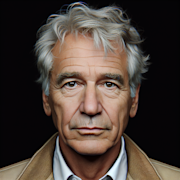Cinematic Alchemy: The Magic of Special Effects in Classic Movies

Imagine a time when the silver screen was unlike anything you had ever witnessed before. A time when audiences were transported to otherworldly realms, captivated by dazzling visual displays that defied all logic. This was the golden age of special effects in classic movies, where visionary filmmakers concocted a potent mixture of artistry and technology to create movie magic that still fascinates us to this day. In this blog post, we delve into the alchemy of special effects in classic films, and explore the secrets behind their enduring allure.
1. The Great Illusion: Early Pioneers of Special Effects
In the earliest days of cinema, the notion of visual effects was still in its infancy. However, that didn’t stop ingenious filmmakers from pushing the boundaries of what was possible on screen. One such visionary was Georges Méliès, a French illusionist-turned-filmmaker. Méliès revolutionized the art of cinema with his fantastical short films, blending magic tricks, meticulously crafted sets, and stop-motion techniques to create mind-bending illusions.
Méliès’ most famous work, “A Trip to the Moon” (1902), showcased his mastery of special effects. The iconic image of a rocket crashing into the eye of the moon remains etched in cinematic history as one of the earliest instances of visual effects used to tell a compelling story.
2. Practical Magic: The Art of In-camera Effects
As technology advanced, so too did the techniques used to achieve special effects on screen. In the era before computer-generated imagery (CGI), filmmakers relied heavily on practical effects and in-camera tricks to captivate their audiences.
Movies like “The Wizard of Oz” (1939) brought to life a fantastical world of witches, flying monkeys, and talking scarecrows. The tornado scene in the film is a testament to the ingenuity of practical effects. By using a combination of wind machines, miniature models, and well-timed editing, the filmmakers created a thrilling spectacle that continues to thrill audiences today.
3. The Master of Miniatures: Ray Harryhausen’s Legacy
No discussion of special effects in classic movies would be complete without mentioning the legendary Ray Harryhausen. Known for his mastery of stop-motion animation, Harryhausen brought mythical creatures and larger-than-life monsters to the silver screen.
In films like “Jason and the Argonauts” (1963) and “Clash of the Titans” (1981), Harryhausen’s meticulously crafted models came alive through the painstaking process of frame-by-frame animation. This attention to detail and the use of miniature sets helped create an otherworldly atmosphere, captivating audiences with their believability.
4. The Digital Revolution: CGI Takes Center Stage
With the advent of computer-generated imagery (CGI) in the late 20th century, a new era of special effects was ushered in. Suddenly, filmmakers had a seemingly limitless playground in which to craft their visions.
One of the most groundbreaking films to showcase the power of CGI was “Jurassic Park” (1993). Director Steven Spielberg used a combination of puppetry, animatronics, and CGI to bring dinosaurs back from extinction. The result was a cinematic experience that left audiences in awe and forever changed the landscape of special effects.
5. Blurring Reality: The Future of Special Effects
Throughout the history of cinema, special effects have evolved hand-in-hand with technological advancements. As we move into the future, the boundaries between reality and visual effects continue to blur, with filmmakers pushing the envelope even further.
Films like “Avatar” (2009) and “Gravity” (2013) showcased the incredible potential of 3D technology and seamless integration of live-action footage with CGI. These advancements immerse audiences in breathtakingly realistic worlds, blurring the line between fantasy and reality.
Conclusion
The magic of special effects in classic movies has captivated audiences for generations. From the early pioneers who ignited our imagination with their illusions to the digital wizards who brought dinosaurs and fantastical creatures to life, each era has added its own unique flavor to the cinematic alchemy of visual effects.
As technology continues to evolve, so too will the art of special effects. Our future adventures on the silver screen hold endless possibilities, ensuring that the magic of movie effects will continue to enchant and transport us to unimaginable worlds. So, sit back, grab your popcorn, and let the magic unfold before your eyes!

Desmond van der Walt
Journalist
More From Classics Authority Movies

Movie
Film Noir's Shadowy Aesthetics: The Art of Visual Storytelling

Movie
The Lives of Others (2006)

Movie
The Conformist (1970)

Movie
Cinematic Magic: The Evolution of Special Effects in Classic Movies

Movie
On the Waterfront (1954)

Movie
Inception (2010)





